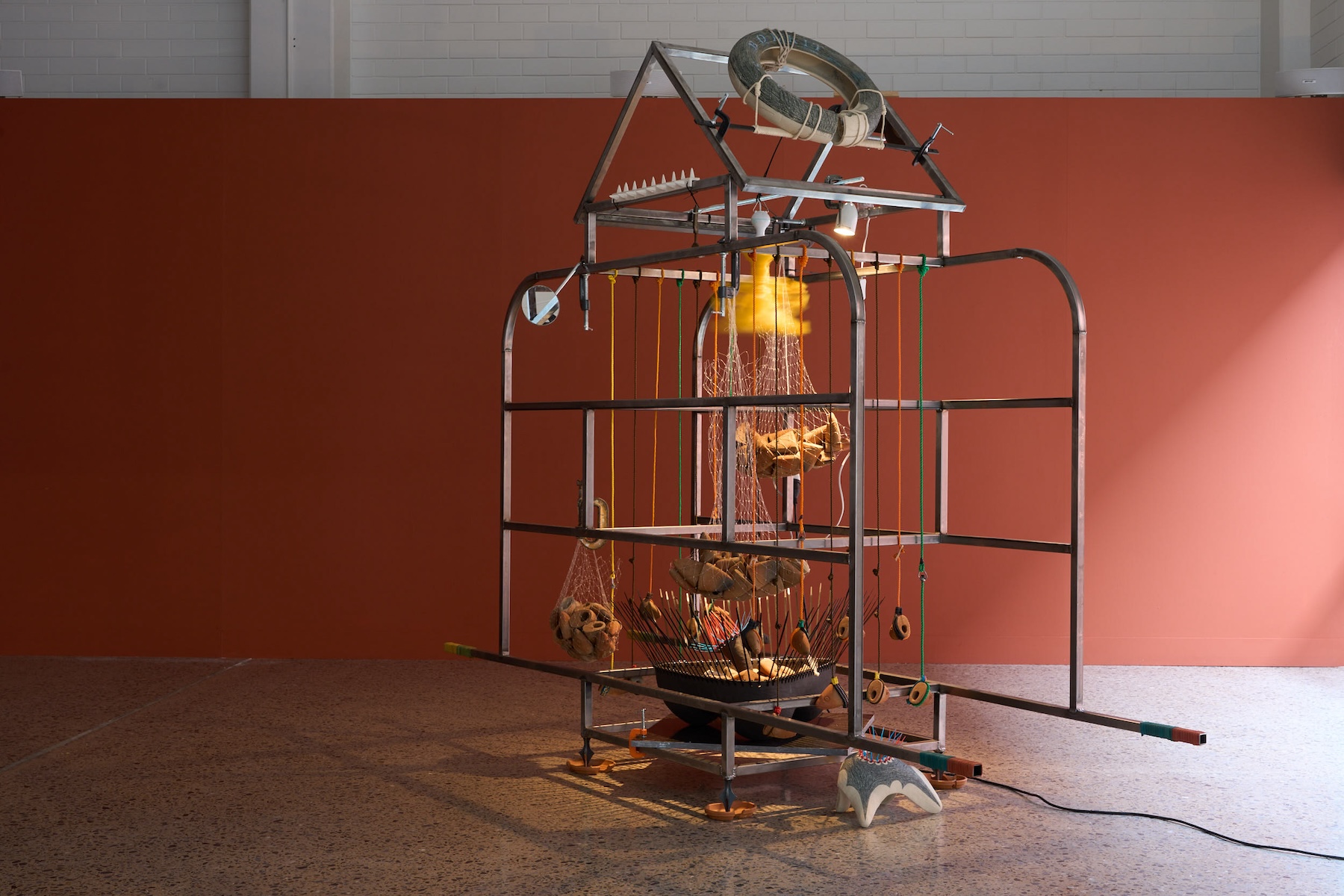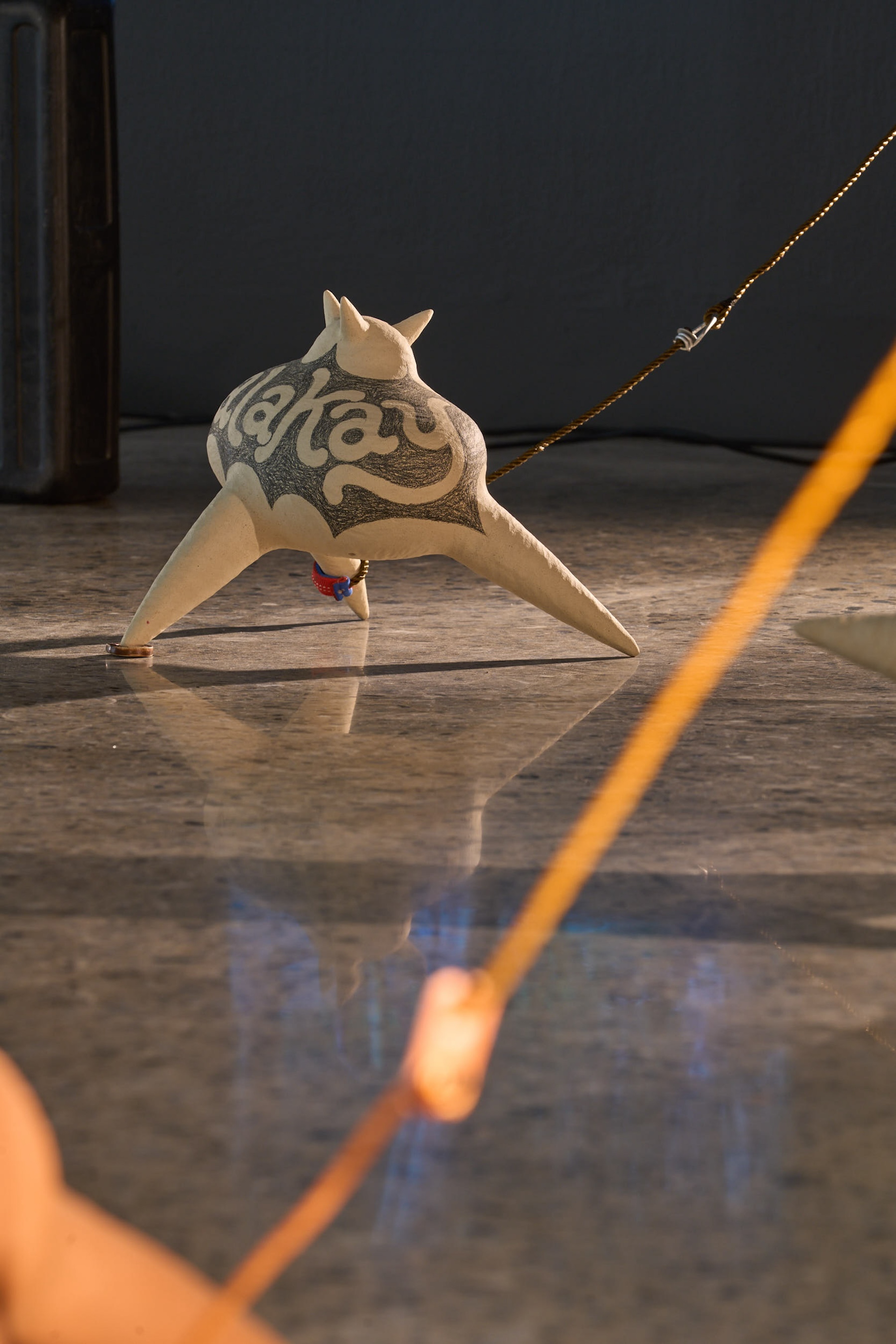‘An untrusted guard’: Mark Valenzuela’s spiky reflection on colonisation’s legacies
The recipient of Adelaide Contemporary Experimental’s 2025 Porter Street Commission, Mark Valenzuela has drawn inspiration from the streets of his country of birth, the Philippines, to examine ‘colonisation here and colonisation there’.




Contemporary artist Mark Valenzuela has developed an artistic practice shaped by his upbringing in the Philippines and his relocation to Australia in 2011. His current exhibition at Adelaide Contemporary Experimental, titled Bantay-Salakay is the result of Valenzuela being the latest recipient of the Porter Street Commission – ACE’s major annual project funded by the 2018 sale of the Parkside base of ACE’s predecessor, Contemporary Art Centre of South Australia. Following past Porter Street projects from Bridget Currie, Allison Chhorn, Kaspar Schmidt Mumm and Lee Salomone, Valenzuela has used the platform to create an ambitious installation that explores cultural identity and the legacy of colonisation.
Valenzuela works in a variety of materials including ceramics, steel, timber, textiles, sound, and video work. His practice focuses on finding parallels between the Philippines and Australia, creating immersive environments that examine how both cultures relate to colonisation.
“The Philippines has been colonised for 250 years,” Valenzuela says. “We’ve always been a subject for invasion. We’re important geographically in that region because of the trade route.”

This enduring legacy of colonisation informs Filipino culture and is marked by protectiveness and defensiveness, themes Valenzuela brings to the forefront of his work.
You might like
“The Philippine culture is about resilience and if you look at it, it’s very defensive, but it’s also offensive,” explains Valenzuela. Now based in Australia the artist uses this duality to examine place. “I make a comparison between two places – colonisation here and colonisation there – and how they are related.”
In the foyer of ACE sits a large-scale steel object that draws on three traditional structures often found on the streets of the Philippines. These include the sari-sari store, which sells assorted goods and is often located on street corners; the kariton, a trolley for transporting items; and the paipitan, a cage used for transporting livestock. Valenzuela’s hybrid structure encapsulates the street culture of the Philippines, using these ordinary everyday concepts to comment on the notion of the offensive and defensive.
"The Philippine culture is about resilience and if you look at it, it’s very defensive, but it’s also offensive."
With a poor education system in the Philippines, places like the sari-sari store serve as a vehicle for education.
Subscribe for updates
“It’s a place where people congregate and hang out and engage in informal teachings and a way to pass on traditions,” Valenzuela explains.
In the main gallery space at ACE, the artist presents an installation of video, sound and ceramics inspired by cockfighting on the streets of the Philippines. Cockfighting is an ingrained cultural practice in the Philippines, but it also serves as a reflection of colonisation, particularly the Spanish influence.
Valenzuela has created spiky forms and tyres made from ceramic that mimic the street scenes of the Philippines, as shown in the accompanying video. Adorning one of the tyres is the word vulcanising, meaning the hardening of rubber. Tyres are ever-present in the Philippines and are frequently repaired and repurposed. They are used to reinforce roofs to protect houses from earthquakes and typhoons.
The spiky ceramic forms embody the idea of defensiveness and feature the words ‘bantay’ and ‘salakay’. Valenzuela explains: “Salakay means to attack and bantay is to guard, but together in our language, bantay salakay means an untrusted guard. You cannot trust this guard because he has his own agenda. Which again goes back to colonisation.”

Throughout the installation, ceramic forms encase speakers and resemble gramophones. Valenzuela uses these forms to experiment with high and low frequencies and how the materials produce sound. The highlight of the work is the back room of ACE, where Valenzuela projects a video of cockfighting across the gallery walls, accompanied by a ceiling-high metal structure filled with ceramic speakers operating at various frequencies. It creates a sensory feast. An overwhelming blend of images and sounds.
The exhibition demonstrates the impact of the $20,000 Porter Street Commission and how much is can impact an artist’s career.
“It’s the best experience in my life,” Valenzuela says. “The people at ACE gave me complete free rein and that’s beautiful because not every space is like that. It gives artists the freedom to really think.”
Mark Valenzuela: Bantay-Salakay continues at Adelaide Contemporary Experimental until September 20 as part of SALA Festival 2025

